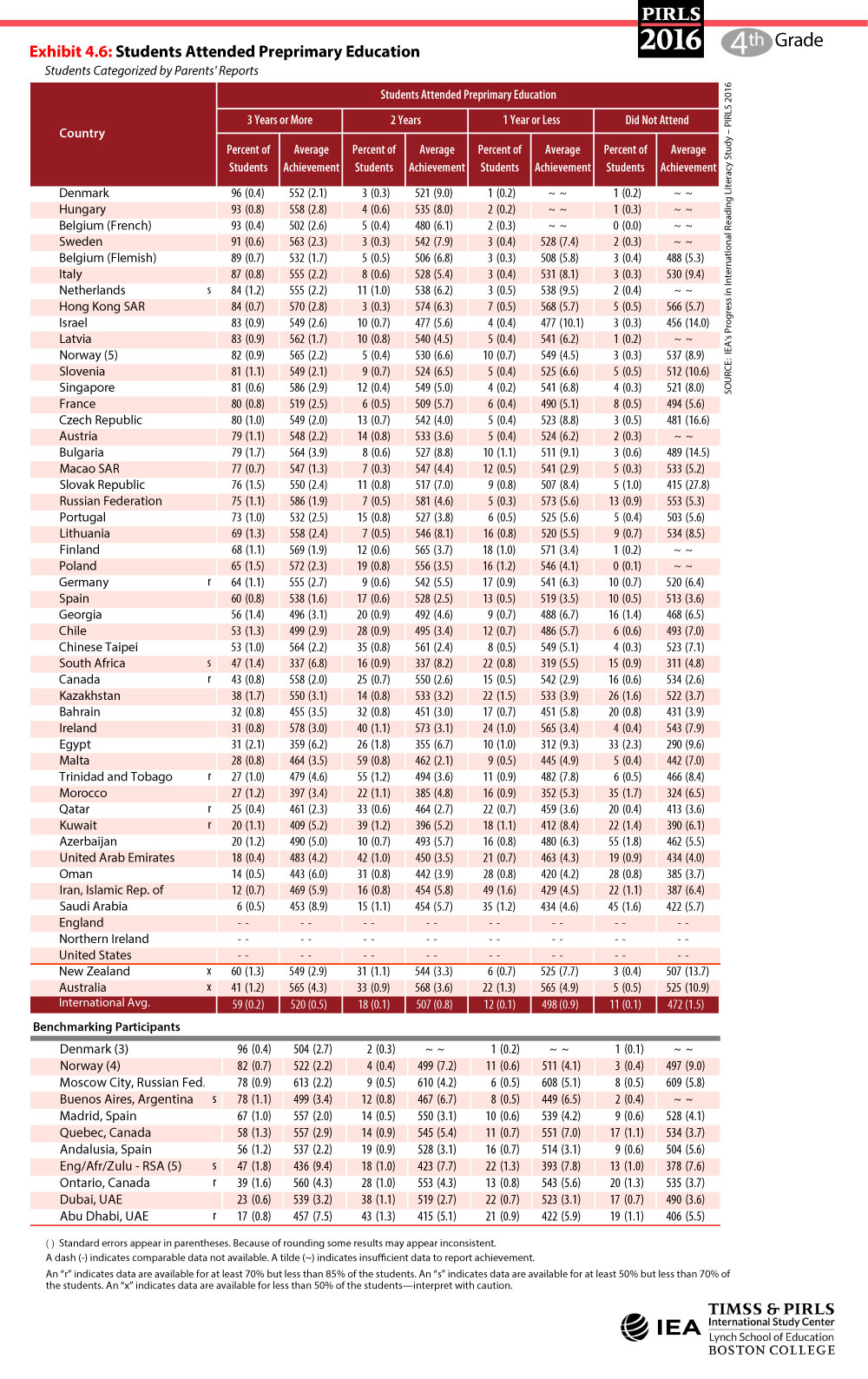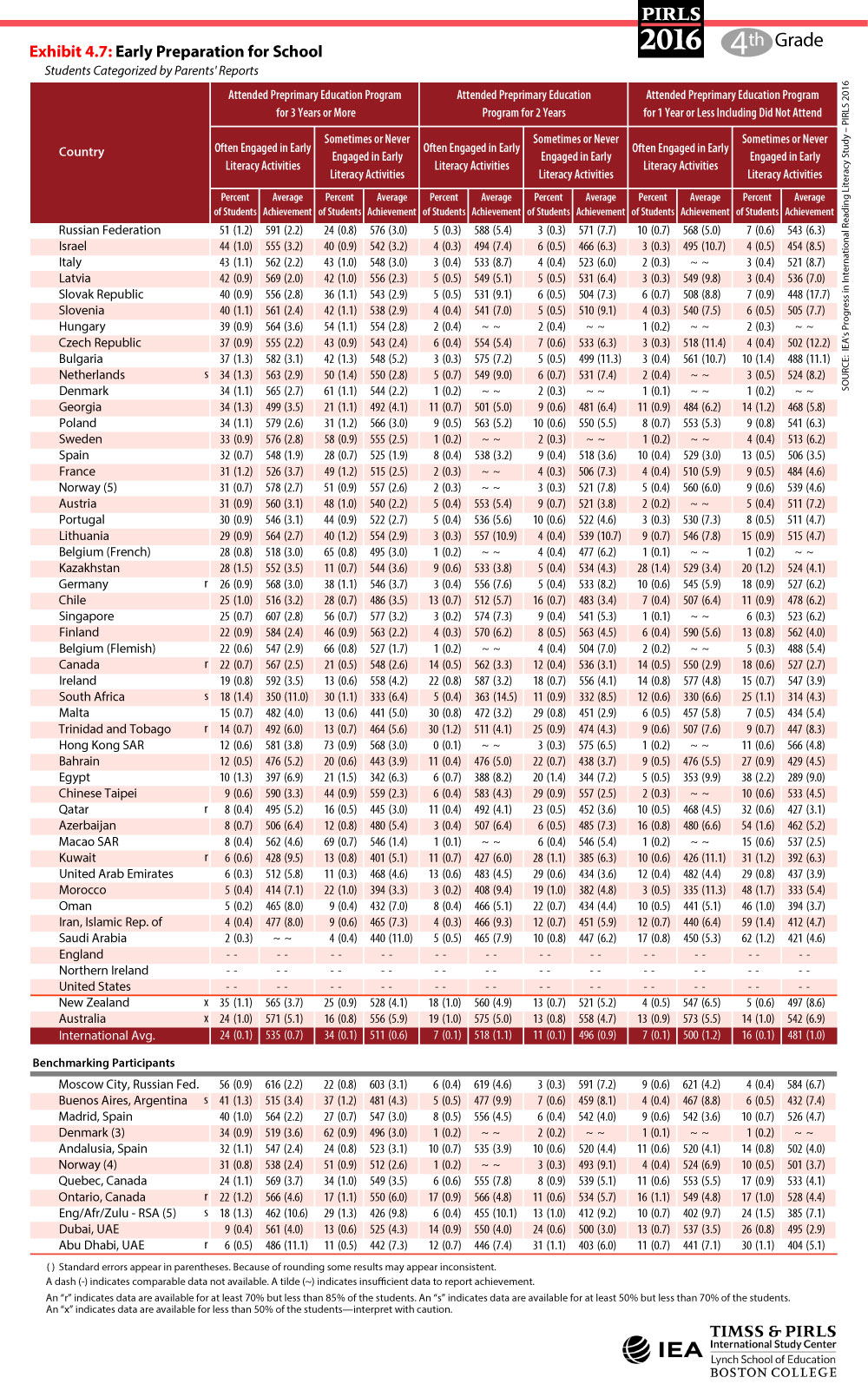There was a positive relationship for fourth grade students between the number of years students attended preprimary education and their reading achievement. According to their parents, across countries a majority of the PIRLS 2016 students had attended 3 years or more of preprimary school—59 percent. Beyond that, on average 18 percent had attended 2 years, 12 percent attended 1 year or less, and only 11 percent had not attended preprimary school. The students who attended 3 years or more had the highest average reading achievement (520), with those with less preprimary school attendance having successively lower average achievement (507, 498, and 472, respectively).
Although there is considerable variation across countries, according to the PIRLS 2016 Encyclopedia, some countries already have mandatory preprimary education (e.g., Denmark, Latvia, Macao, and Trinidad and Tobago), some have nearly 100 percent enrollment even though attendance is not mandatory (e.g., Ireland, Czech Republic, and France), and a number of the remaining countries are working to increase enrollment in preprimary education. Of course, school policies of entering primary school at older ages (e.g., age 7 in Finland, Lithuania, South Africa, and Sweden) permit opportunities for more years of preschool attendance than when children start primary school at younger ages (e.g., age 4 or 5 in Malta, England, and Northern Ireland). Exhibit 2 in About PIRLS contains information across countries about the different policies and practices about the age of entry to primary school.
The results in Exhibit 4.7 indicate, however, that preprimary education cannot completely replace parental involvement in developing children’s reading literacy. At each level of preprimary attendance from 3 years or more down through 1 year or less, the students whose parents Often engaged them in early literacy activities had higher average reading achievement than those engaged only Sometimes or Never.


